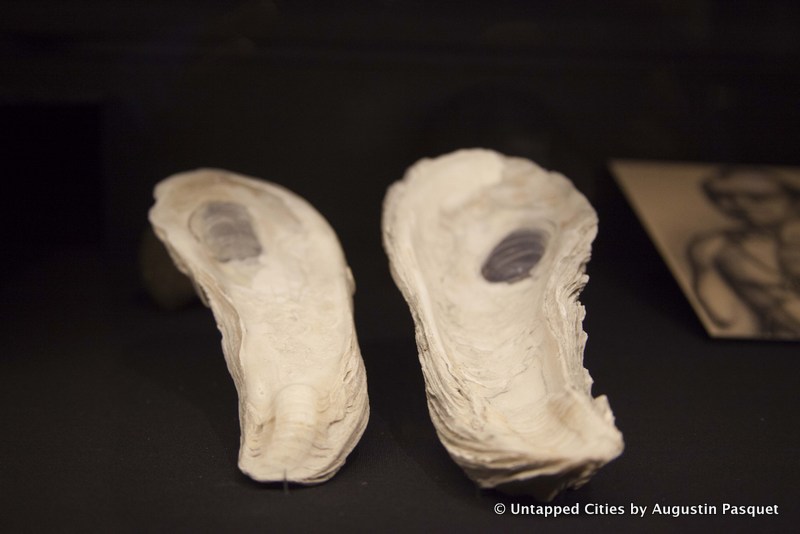2. Foot Long Oyster Shells

The tragic history of New York City’s oysters (and its recent renaissance) tells the story of New York City’s waterfront and much about its early settlers. A first person account by a Dutch missionary named Jasper Danckaerts, recounted in the book Gowanus: Brooklyn’s Curious Canal, describes Gowanus oysters in 1679 as “large and full, some of them not less than a foot long, and they grow sometimes ten, twelve and sixteen together, and are then like a piece of rock.”
Readers have asked us before whether there is actual evidence of oysters “the size of dinner plates” or a “foot long. While the oyster shells in the Port City gallery of the exhibition, on loan through the New York State Museum in Albany, may not be dinner plate shaped, the larger one is close to a foot long. Its inclusion highlights how the Lenape Indians who first settled the island that is now Manhattan “used the natural resources of the Hudson River estuary in many ways. The plentiful oysters and clams were not just food: their shells could be turned into tools and ornaments,” describes the exhibition display. Sadly, though the Lenape were careful to keep their lifestyle sustainable, their population was reduced drastically through disease, warfare and migration. By 1700, only small groups remained, scattered across the five boroughs.





